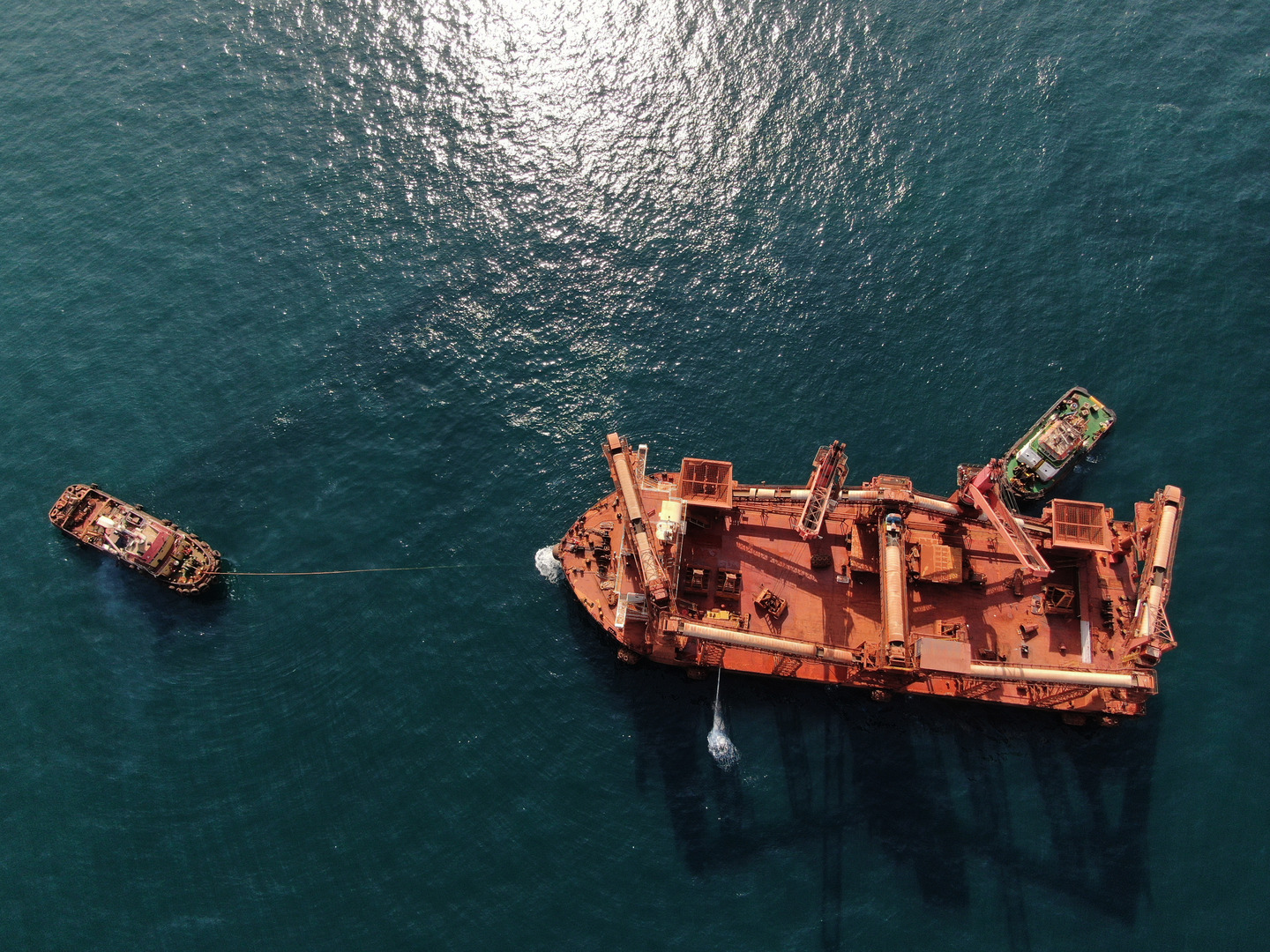A cargo handling system shapes the operational landscape onboard a transshipper, writes Bagya Vivekanandhan, Technical Designer, ShiELD Services. At its core, it comprises key components such as hoppers, cranes and grabs, belt conveyor systems, as well as shiploaders, all working collectively for a synchronized material flow. During cargo transfer on board, there are multiple transfer points involved, the first one being the hoppers that receive cargo from the deck cranes. Therefore, it sets the course for a progressive and profitable cargo transfer rate.
The hopper design, including size, geometry, and accessories, mainly depends on the cargo characteristics, desired cargo transfer rate, and the available space on the transshipper. Depending also on the project requirements, a belt feeder is installed right below the hopper outlet to regulate the volume, distribution, and speed of the cargo being transferred onto the other conveyors. Moreover, additional flaps are installed around the hopper upper opening to contain potential cargo spillage during the discharge from the grab.
One of the consequences of this arrangement, i.e. installing the conveyor and hoppers on the vessel’s deck, is that the air draught of the transshipper is usually much higher than that of a traditional bulk carrier and this can result in limitations when the transshipper must load cargo from a standard jetty or loading facility.
CASE STUDY
The project requires an existing Supramax bulk carrier converted into a transshipped with the installation of a complete cargo handling system including hoppers, deck cranes and grabs, belt conveyors, as well as shiploaders. During the development of the design, transshipment specialist Shi.E.L.D. Services had to address an air draught issue which eventually involved a smart modification of the hopper features.
As per the loading plan, the transshipper is moored to the jetty on its starboard side where the hoppers are installed. The cargo is loaded directly at the port into the transshipper holds through a shore loading boom, which, considering its size and the operating parameters, determines the admissible air draught of the vessel to be loaded. This required a thorough study of the heights of the conveyor system during the design phase.
A preliminary study highlighted that, due to the high transshipper air draught, a potential interference between the hoppers and the shore loading boom had to be rectified to make sure that port loading operations could be carried out as planned.
For this purpose, Shi.E.L.D. Services investigated the following aspects to identify the ones on which we could intervene to find a possible solution.
- Vessel draught: the transshipper arrives at the jetty in ballast condition. In this project’s context, opting for a heavy ballast condition to reduce air draught was dismissed due to the time-consuming nature of filling/ emptying the ballast hold. The time required for ballast and deballast operations was a significant factor in this decision-making process.
- Tide: the fluctuation of water levels caused by tides inevitably affects the elevation of the transshipper (air draught) in respect to the height of the loading boom of the jetty. Additionally, in this specific location, local atmospheric factors such as wind and currents have a significant impact on water levels that cannot be overlooked.
- Design of the cargo handling equipment: since the transshipper is loaded dockside on its starboard side, which corresponds to the side where the hoppers are installed — among the tallest elements of the entire conveyor system — Shi.E.L.D. Services had to focus on defining the precise height of the hoppers. This is to allow the shore-based shiploader to safely reach the cargo holds for the loading operations. It’s understood how crucial this aspect of the design is to avoid having excessively tall hoppers once the transshipper is in place for loading, as neither the hoppers nor the shore-based loader can be adjusted at that point. Taking into account the operating needs and a cost-benefit analysis, Shi.E.L.D. Services evaluated the below listed possible solutions.
- Of the four hoppers installed on the starboard side of the vessel, the two central ones can be designed as movable type, allowing them to be shifted backward to create room for the loading boom. However, this would only be achievable with the installation of additional equipment resulting in higher costs and longer delivery time.
- Lower the hoppers, but this would also reduce the size of the hopper upper opening and reduce its volume. This would increase the risk of cargo spillage while feeding the hopper with the grab and increase the crane cycle, reducing the transshipper’s loading performance.
- The anti-spillage plates, which contribute to the hopper height, are usually fixed elements and most of the times just a simple extension of the hopper walls. Shi.E.L.D. Services decided to make the anti-spillage plates separate and independent from the hopper walls and make them foldable and actuated by an hydraulic system. The plates would be raised only during the offshore transshipment operations, whereas they would remain folded at port, when the cargo handling system is not in use. In this configuration the transshipper air draught was reduced enough for the shore loading boom to safely overcome the hoppers and to guarantee safe operations at port under any vessel loading conditions and with any tide.
CONCLUSION
Thanks to its holistic approach, Shi.E.L.D. Services was able to find a simple yet clever solution that helped overcome a strict limitation, which brought a great benefit to the project performance and the client’s success.




